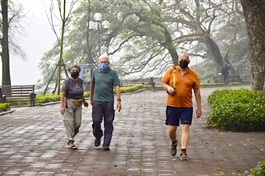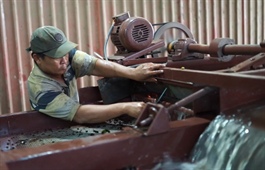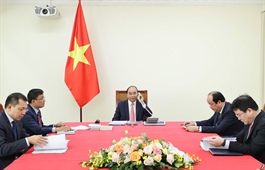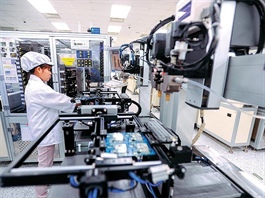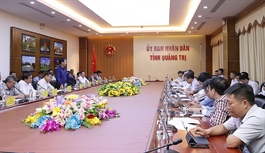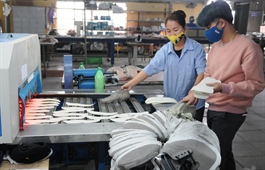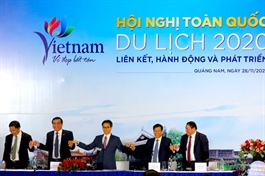Annual textile and garment exports down for first time in 25 years
Annual textile and garment exports down for first time in 25 years
The total export value of the textile and garment industry is forecast to reach about US$33.5-34 billion this year, a year-on-year decrease of 14-15 per cent, but higher than the forecast of $30-31 billion in April.

The Ministry of Industry and Trade said this year was particularly difficult for the Vietnamese textile and garment industry when the market was complex and difficult to forecast.
Under the impact of the COVID-19 pandemic, the textiles and garments industry faced great direct losses.
Demand for textile products slowed due to COVID-19 when consumers around the world focused on essential appliances and disease prevention and Vietnamese textile and garment enterprises faced many difficulties due to scarce orders.
Le Tien Truong, general director of Viet Nam National Textile and Garment Group (Vinatex), said the pandemic broke supply chains and had resulted in declining demand for goods the world over.
Though the export turnover of the textile and garment industry this year will decrease after 25 years of continuous growth, Vinatex’s general director said the decrease in Viet Nam's textile and apparel industry was not as large as for other countries.
Facing great difficulties from COVID-19, in 2020, textile enterprises implemented a rapid transformation of product structure, from traditional to adaptable products such as switching from high-class suits, shirts to labour protection, knitwear and traditional shirts to maintain production and business activities.
Truong also stated that despite the pandemic, the group still maintained jobs for the whole system and no employees had to quit their jobs.
The group’s average income expected to be realised in 2020 is VND7.95 million (US$342) per person per month.
Nguyen Duc Tri, Chairman of Hoa Tho Textile-Garment JSC, said he wished the Government would pay more attention to the development of industrial zones with wastewater treatment systems, ensuring environmental hygiene in the central region so textile and dyeing enterprises and supporting industries could focus on development and attracting workers from neighbouring areas such as HCM City, Bien Hoa and Dong Nai.
The Ministry of Industry and Trade said textile enterprises needed to continue to have more new solutions to change production and business methods to suit the new situation.
At the same time, the ministry recommended enterprises exploit and expand the domestic market and link with customers to form production chains.








